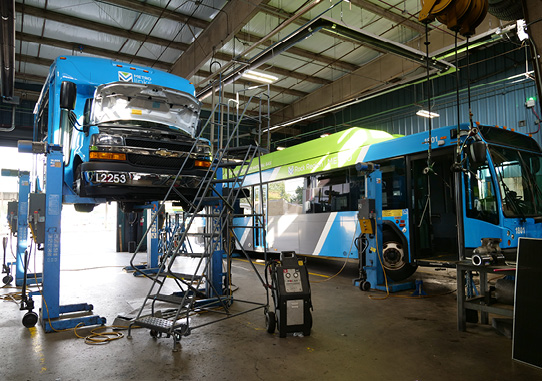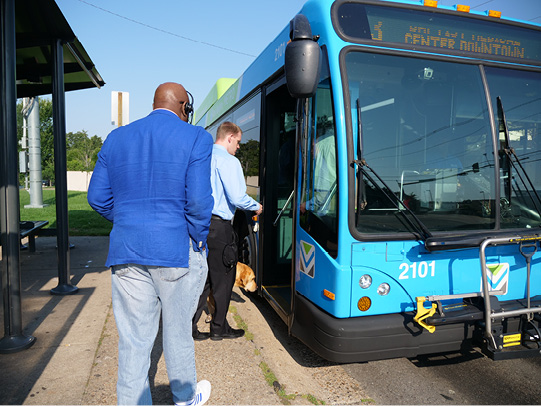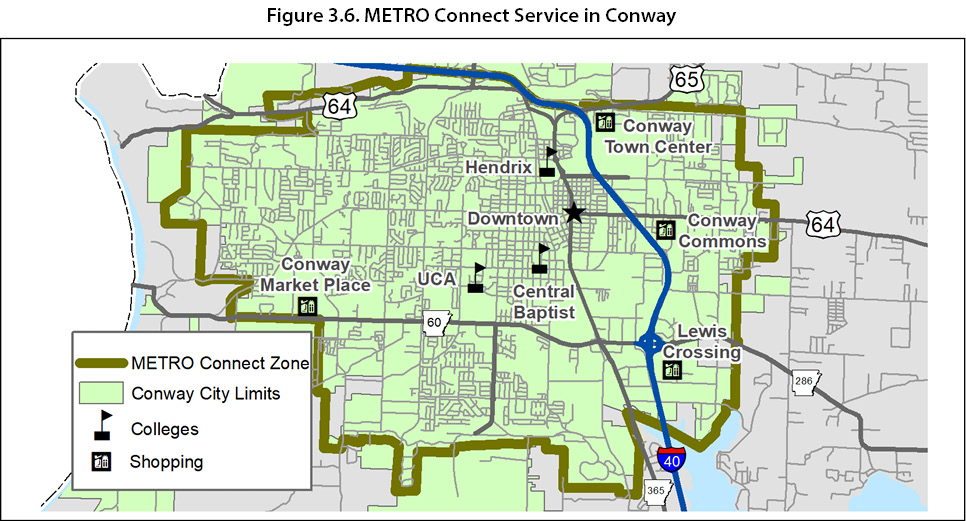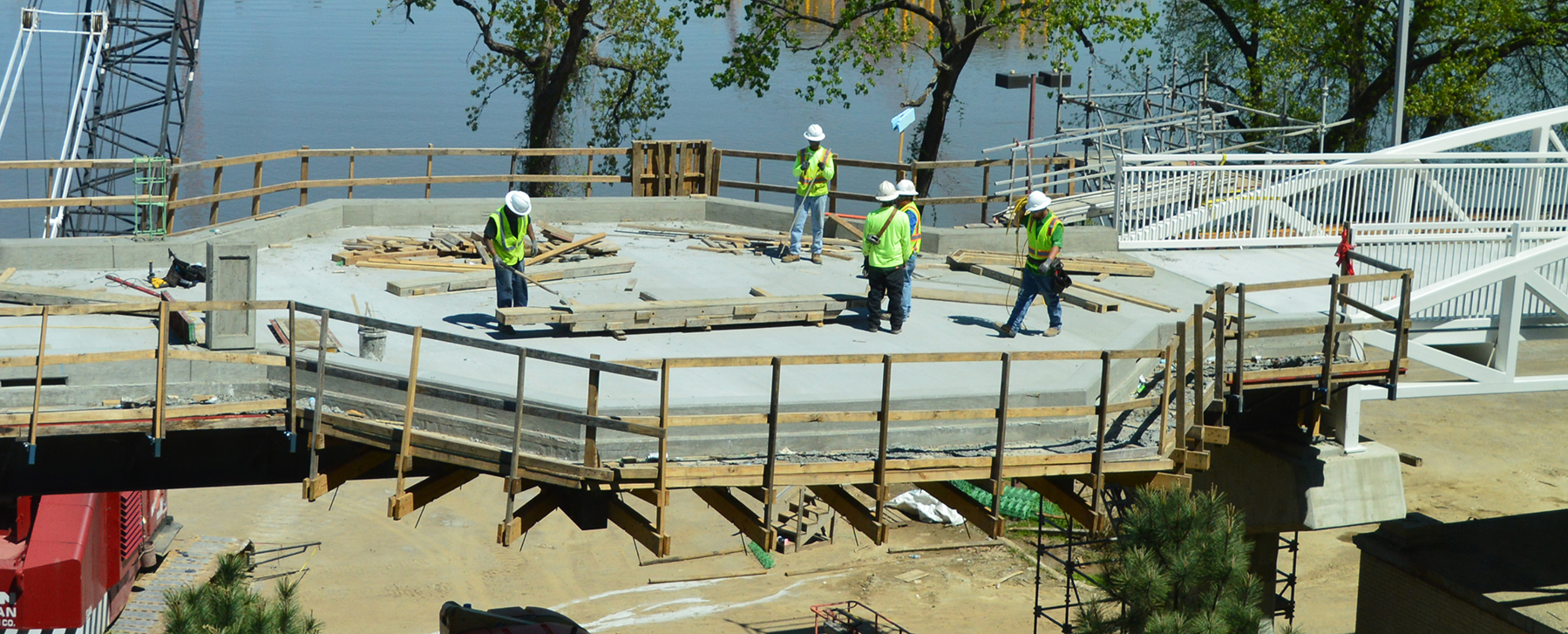6.
Support regionwide transit development that adapts to a dynamic transportation environment.
Transit should be leveraged to increase mobility for non-private vehicle travelers. An expanded, fixed route bus service, both regionally and locally, will be the spine of a system that includes on-demand, paratransit, streetcar, and van pool service, as well as new technologies to improve the transit experience and reduce carbon emissions.
Investing in transit within the region provides residents and visitors with access to transportation mode choice, connects people to important destinations and helps mitigate congestion and negative impacts on air quality.
LOCAL TRANSIT
The CARTS area has multiple modes of transit service operated by one small urban public transit agency, one rural agency and several mainly nonprofit organizations. Rock Region METRO provides fixed route and on-demand service in Little Rock and North Little Rock, and recently launched a new on-demand service in Conway. South Central Arkansas Transit System provides limited service in Saline County. Multiple providers across the region provide service to specific populations through the Federal Transit Administration’s Section 5310 program.
The largest transit provider in the region, Rock Region METRO, relies heavily on funds from local jurisdictions, particularly Little Rock and North Little Rock. Federal funding and revenue from fares makes up much of the rest of its funding. Funding challenges hinder METRO (and other transit providers) from providing longer transit hours and more frequent route service, like 10-to-15-minute bus arrivals. Transit must be supported by a guaranteed long-term investment to increase ridership.
Recent trends suggest that flexible microtransit, in zones of greater ridership, could accommodate users with on-demand style service from smaller fleet vehicles. Customers can schedule a pick-up and drop off location via their smart phone. METRO has begun using this technology and will monitor its effects on the transit system. Although microtransit from public transit organizations is relatively new, it is already showing where transit demand is rising. Microtransit service shows promise, but yearly performance evaluations will be necessary to determine its utility.
Local services must creatively adapt to increasing transportation costs, nevertheless, traditional fixed route service will provide the consistency that transit riders expect. However, with current funding constraints, expanding these routes, increasing their frequency, or extending service hours is a challenge. Transit maintenance will be the responsibility of the provider as well. A dedicated funding source should be considered to maintain efficient operations and make these improvements.
PERSONAL MOBILITY TRENDS
Ridesharing and micro-mobility vehicles are increasingly used to support personal mobility. These can be competitors to transit but also enhance its reach. Transit riders may hop on a scooter to get from the bus stop to their final destination. Conversely, ridesharing can be more direct to a rider’s destination, and steer them away from public transit. As these options increase, transportation planning must account for their impacts on our roads and our budgets.
REGIONAL TRANSIT
A comprehensive regional transit service would increase the mobility of our residents. Metroplan will pursue a regional transit plan to explore potential demand, identify crucial corridors, and funding for transit between communities. Regional transit would be most useful for commuters during peak travel hours. In turn, fewer private vehicles will be utilizing tour roads at peak periods, increasing safety and efficiency.
One regional desire is to pursue a high-quality Bus Rapid Transit (BRT) system that delivers fast and efficient service. BRTs include many service enhancements over traditional bus service that aim to increase service quality and efficiency. These enhancements include dedicated bus lanes, busways, traffic signal priority, off-board fare collection, elevated platforms, and enhanced
stations. Because BRT contains features similar to a light rail or subway system,
it is often considered more reliable, convenient, and faster than regular bus services, without the large upfront capital investment that a light rail or subway system would require.
Shared parking opportunities must also be considered along regional routes to provide access for individuals that prefer to park and ride. Metroplan and transit providers must collaborate with ARDOT to implement transit infrastructure along freeway corridors and state arterials.
Successful regional transit cannot be achieved without additional investments and integration with local transit networks. Local service drives regional demand because it provides a foundation of ridership on which to build, and the assurance that a rider can reach their final destination after their regional route ends. A regional plan must identify communities that can fund local service that could feed a regional system. Local transit expansion is first priority to serve Central Arkansans before regional transit can succeed.

Photo: Rock Region METRO.


